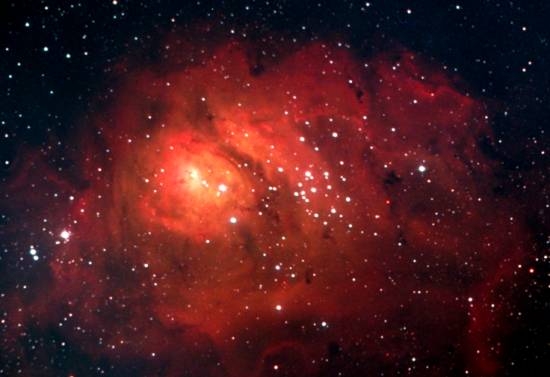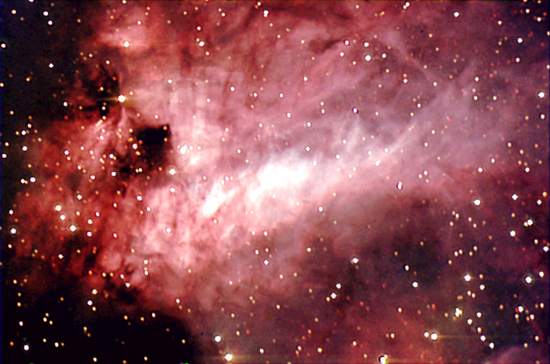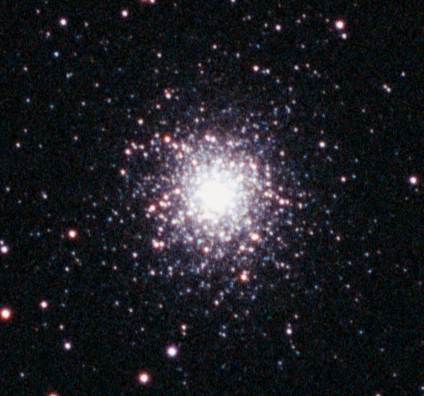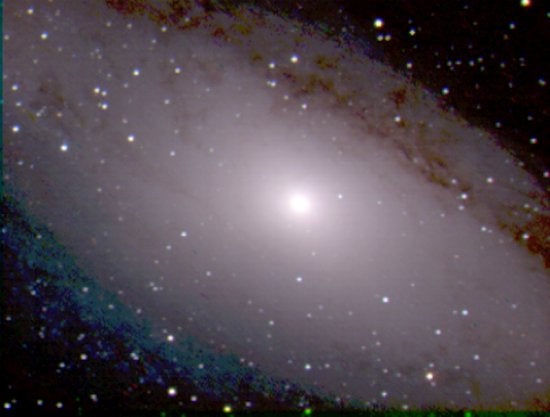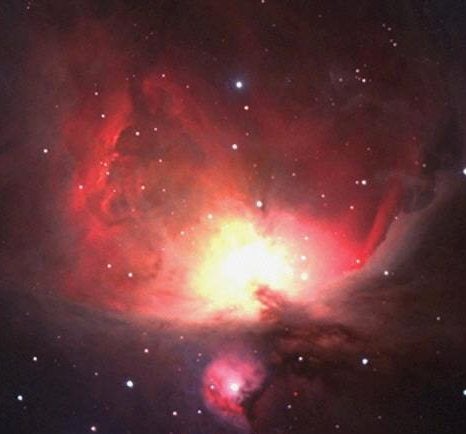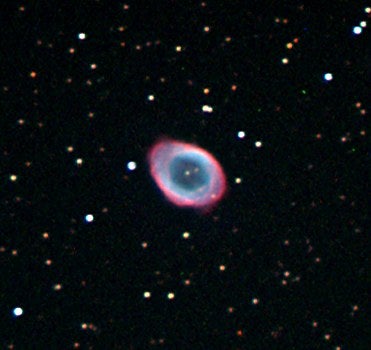In the June 2003 issue of Astronomy, James Mullaney provides cues from certain celestial objects that can improve your ability to view celestial targets in 3-D. Provided below are some of these objects from the Messier catalog that Mullaney recommends for adding depth to your observing.
The Lagoon Nebula (M8)
Approximately 5,200 light-years away, the Lagoon Nebula was first observed by Charles Messier on May 23, 1764.
The Omega Nebula (M17)
The Omega Nebula, found in Sagittarius, is about 5,000 light-years from Earth.
The Omega Nebula, found in Sagittarius, is about 5,000 light-years from Earth.
The Hercules Cluster (M13)
Anyone who has ever seen the magnificent Hercules Cluster through a 10-inch or larger scope at 150x or more will readily agree that they were beholding a vast spherical swarm of stars — a colossal ball of glittering suns suspended three-dimensionally before them in space.
Anyone who has ever seen the magnificent Hercules Cluster through a 10-inch or larger scope at 150x or more will readily agree that they were beholding a vast spherical swarm of stars — a colossal ball of glittering suns suspended three-dimensionally before them in space.
The Andromeda Galaxy (M31)
The immense nuclear bulge, its tilt toward our line of sight, and dark areas between its luminous spiral arms all combine to give the impression of seeing the Andromeda Galaxy as a colossal wheel hovering in the sky.
The immense nuclear bulge, its tilt toward our line of sight, and dark areas between its luminous spiral arms all combine to give the impression of seeing the Andromeda Galaxy as a colossal wheel hovering in the sky.
The Orion Nebula (M42)
The spectacular Orion Nebula (M42) not only has stars sprinkled over the top of it, but also embedded within. Viewing the Orion stellar nursery with a low-power, wide-field eyepiece in a 6-inch or larger telescope on a dark, moonless night shows wings or nebulosity encircling the heart of the nebula, giving a distinct sense of looking at a huge three-dimensional radiation-blown cavity or bubble.
The spectacular Orion Nebula (M42) not only has stars sprinkled over the top of it, but also embedded within. Viewing the Orion stellar nursery with a low-power, wide-field eyepiece in a 6-inch or larger telescope on a dark, moonless night shows wings or nebulosity encircling the heart of the nebula, giving a distinct sense of looking at a huge three-dimensional radiation-blown cavity or bubble.
The Ring Nebula (M57)
The Ring Nebula rests over 2,000 light-years from Earth, with a halo of material extending off to over 3.5 arc minutes.
The Ring Nebula rests over 2,000 light-years from Earth, with a halo of material extending off to over 3.5 arc minutes.

